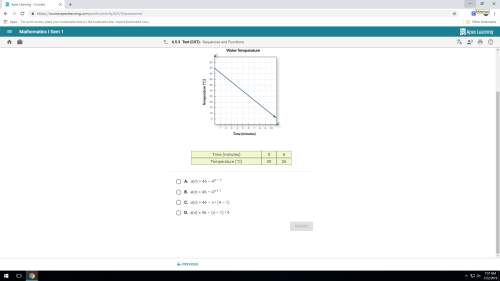
Mathematics, 30.11.2020 06:10 alexandraparava
After a rotation, A(–3, 4) maps to A'(4, 3), B(4, –5) maps to B'(–5, –4), and C(1, 6) maps to C'(6, –1). Which rule describes the rotation?


Answers: 3
Another question on Mathematics


Mathematics, 21.06.2019 13:00
If a and b are the measures of two first quadrant angles and sin a = 4/9 and sin b = 2/5 find sin(a+b).
Answers: 1

Mathematics, 21.06.2019 23:00
Match the vocabulary to the proper definition. in probability, two events in which 1. conditional probability the outcome of one event is independent of the outcome of a second event. 2. dependent events in probability, two events in which the outcome of one event is dependent on the outcome of a second event. the probability of an event in which the outcome of the event is conditional on the outcome of one or more different events. 3. independent events
Answers: 2

Mathematics, 22.06.2019 00:30
36x2 + 49y2 = 1,764 the foci are located at: a) (-√13, 0) and (√13,0) b) (0, -√13) and (0,√13) c) (-1, 0) and (1, 0)
Answers: 1
You know the right answer?
After a rotation, A(–3, 4) maps to A'(4, 3), B(4, –5) maps to B'(–5, –4), and C(1, 6) maps to C'(6,...
Questions

History, 12.07.2019 06:50


History, 12.07.2019 06:50

Mathematics, 12.07.2019 06:50


Chemistry, 12.07.2019 06:50


Chemistry, 12.07.2019 06:50

Chemistry, 12.07.2019 06:50


History, 12.07.2019 06:50

Chemistry, 12.07.2019 06:50



Advanced Placement (AP), 12.07.2019 06:50



Computers and Technology, 12.07.2019 06:50


Mathematics, 12.07.2019 06:50




